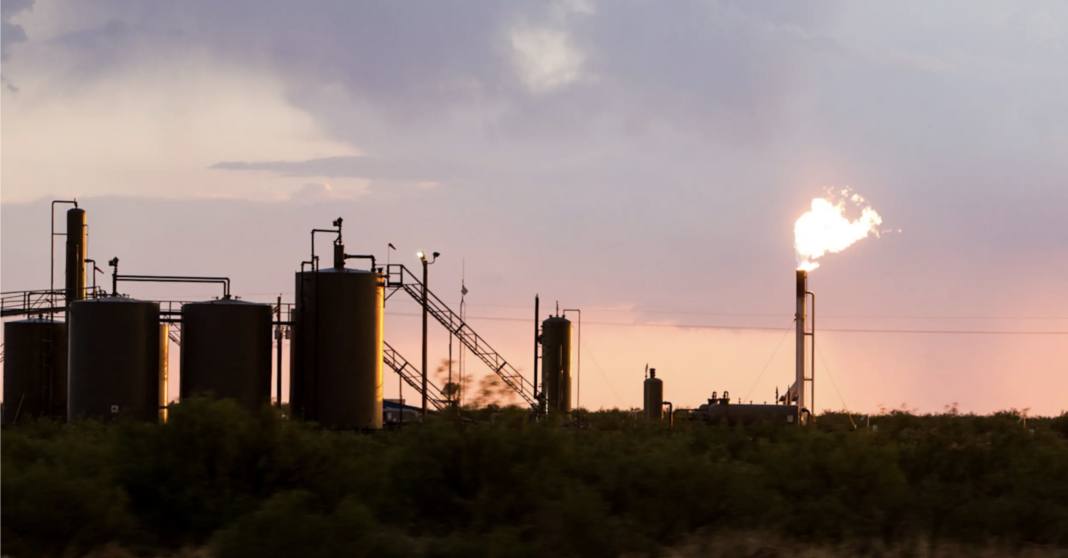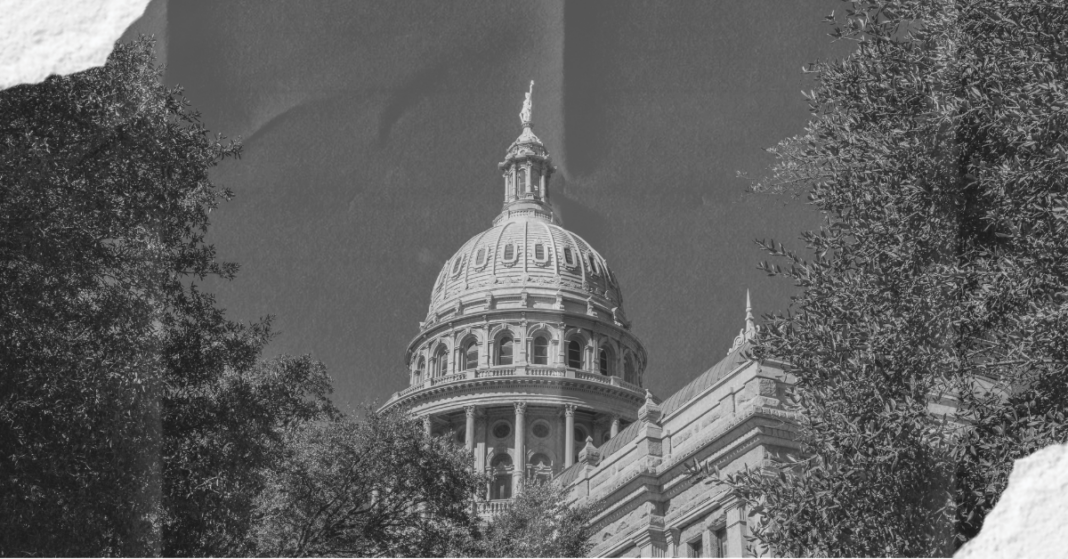The Environmental Protection Agency got an earful from Texans this month.
In a marathon three-day public hearing, close to 300 people across the country gave comments on the agency’s supplemental proposal to reduce methane in oil and natural gas operations. Many called in from Texas, New Mexico, Pennsylvania and other oil and gas producing states that drive U.S. methane emissions.
The public comment period closes on Feb. 13, and the EPA will issue the final rule later this year. The rule is a cornerstone of the EPA’s strategy under President Joe Biden to reduce greenhouse gas emissions. The rule will have the biggest impact in oil and gas producing states like Texas that do not have broad methane regulations. Texas agencies tasked with regulating the oil and gas industry have questioned several provisions of the proposed rule.
Oil and natural gas operations are the largest industrial methane source in the U.S. According to the Environmental Defense Fund’s Permian MAP project, the Permian Basin — spread between West Texas and southeastern New Mexico — is the highest methane-emitting oil and gas basin in the nation. Methane is a primary component of natural gas.
“I’ve seen firsthand how these small, low-producing wells contribute to methane and greenhouse gas pollution,” said Sheila Serna, climate science and policy director at the Rio Grande International Study Center in Laredo. “And how the TCEQ [the Texas Commission on Environmental Quality], whose mission statement is to protect human health and the environment, has greatly failed us.”
Serna was previously a TCEQ air emissions investigator in Webb County, which contains part of the Eagle Ford Shale formation.
“We need strong rules like this to come down from the EPA,” she said in an interview. “Because states that are resistant to regulating this sector will need to comply.”
Texas will be a proving ground for EPA methane regulations
Methane follows carbon dioxide as the second-most-abundant human-caused greenhouse gas. Because methane is more potent at trapping heat in the atmosphere than CO2, reducing methane emissions is one of the most effective short-term measures to slow the pace of climate change.
The EPA released the methane rule in November 2021, and in November 2022 released the supplemental rule to strengthen and expand on the original proposal. The supplemental rule would reduce methane emissions by 87% below 2005 levels by 2030. It would also reduce volatile organic compounds (VOCs) and toxic air emissions, including benzene, from oil and methane gas operations.
The supplemental proposal includes provisions to ensure that all wells are monitored for leaks, prevent leaks from abandoned wells and create a “super emitter” program to quickly identify and report large methane leaks. Vast quantities of methane leak from wells and pipelines.
The rule’s success will hinge on implementation in the country’s largest oil and gas fields. The Permian Basin alone accounts for 40% of the U.S. oil supply and 15% of the gas supply.
“Politically in Texas we have not been able to get the two main state agencies to take methane seriously,” said Cyrus Reed, conservation director for the Lone Star Sierra Club. “TCEQ does not have specific state rules on methane pollution so we really need the federal government to step in because our state agencies are not going to act.”
The proposed rule would crack down on venting and flaring, which are still routine practices in Texas oil and gas fields. Flaring involves burning methane at the wellhead, either to reduce pressure as a safety precaution or, more typically, to dispose of unwanted natural gas that surfaces as a byproduct of oil extraction.
Methane can also simply be “vented” at the wellhead — released directly into the atmosphere.
Flaring methane is preferable to simply venting it because burning the gas turns it into carbon dioxide, which is less warming. But both flaring and venting, beyond their impact on climate change, pose serious health threats to nearby residents. Flaring releases a variety of hazardous air pollutants, including VOCs, and contributes to ground-level ozone, a pollutant that causes respiratory illness and heart disease.
In 2021 the Texas Railroad Commission, which regulates oil and gas operators, issued 3,351 permits allowing fossil fuel extractors to vent and flare natural gas. Under Texas’ administrative code, flaring isn’t supposed to occur without exceptions granted under the commission’s Rule 32, which the Railroad Commission almost never denies.
Railroad Commission communications director R.J. DeSilva said the agency has taken “extensive steps to reduce flaring in recent years” and said the flaring rate has dropped by more than 70% since June 2019.
While the number of flaring permits has declined since 2019, organizations including Earthworks have documented that many flares in the Permian Basin are unpermitted.
Last year, students at Arizona State University’s Roy Howard Center for Investigative Journalism analyzed data from satellites equipped with Visible Infrared Imaging Radiometer Suite instruments able to detect methane leaks and compared those results from 2012 through 2020 with totals for flaring and venting reported to regulators by fossil fuel companies. In Texas, the methane emissions detected by the satellites were almost double the amount reported by the companies for flared and vented gas.
The TCEQ regulates air emissions from drilling sites. TCEQ spokesperson Victoria Cann said that controlling methane is a co-benefit of existing agency regulations for VOCs, which cause cancer and harm humans’ nervous, respiratory and immune systems. VOCs also help form smog-producing ozone and particulate matter, which can lead to heart, lung, respiratory problems and early death.
Cann said compliance is evaluated during routine investigations and in response to complaints.
On the other side of the Permian Basin, New Mexico’s economy also depends on the oil and gas sectors. But the Democrat-controlled Legislature has passed new emissions regulations. Many New Mexico residents have submitted comments to the EPA, urging a strong stance on methane emissions.
“New Mexico supports the U.S. EPA’s efforts to create a national rule that levels the playing field across states,” said New Mexico Environment Department spokesperson Matthew Maez.
In 2021, New Mexico prohibited venting and flaring at new and existing wells. In 2022, the state adopted the NMED oil and gas air emission rule, which also targets methane emissions. But Maez noted the agency’s enforcement capacity is limited because the New Mexico Legislature has not funded additional air quality inspectors.
Texas regulators have not been receptive to the EPA regulating methane.
“These continued anti-oil and -gas policies will kill jobs, stifle economic growth, and make America more reliant of foreign nations to provide reliable energy,” Railroad Commission Chair Wayne Christan said in November 2021, when the methane rule was first released.
TCEQ submitted public comments on the initial proposed rule in January 2022, questioning the EPA’s authority to implement the rule. The TCEQ comments opposed the inclusion of abandoned wells and many small-scale oil and gas operators in the rule. The agency said the rule’s economic impacts had been underestimated and the social benefits overestimated.
TCEQ spokesperson Cann said the agency is reviewing the supplemental proposal and will be submitting additional comments. DeSilva, of the Railroad Commission, said the agency will also be providing further comments to the EPA. Both agencies submitted requests for an extension to the public comment period.
“The process is flawed”: Texas advocates call for strong federal rule
Many of those giving public comment to the EPA had extensive experience working on air quality and oil and gas issues. One was independent consultant James Tim Doty, who worked for 17 years on the TCEQ’s mobile air monitoring unit.
“Environmental pollution in the state of Texas, the Permian Basin, is unlike anything I have ever seen,” he said.
“We have no idea how many methane emissions are out there,” he said, urging the EPA to adopt the rule. “The process is flawed.”
Reed, of the Sierra Club, said the supplemental rule improved on the initial rule the EPA proposed in 2021. He was glad to see the rule includes both new and existing oil and gas wells. Reed said it is important for the EPA to adopt provisions that cover smaller operators and low-producing oil wells.
“If we’re trying to cut down and eliminate methane pollution, it is actually some of those low-producing wells that are the biggest problem,” he said. “Not subjecting them to these rules would be going backwards.”
Serna, of the Rio Grande International Study Center, said the methane debate is far from over and oil and gas operators are likely to contest provisions of the EPA rule. But she was encouraged by the strong showing of support for the rule during the public hearings.
“I submitted my comment on day one,” she said. “It was great to see communities all around the United States come together.”
Disclosure: The Environmental Defense Fund has been a financial supporter of The Texas Tribune, a nonprofit, nonpartisan news organization that is funded in part by donations from members, foundations and corporate sponsors. Financial supporters play no role in the Tribune’s journalism. Find a complete list of them here.
This story originally appeared on the Texas Tribune. To read this article in its original format, click here.








